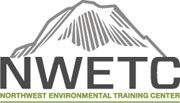* Malcolm Wilson, CEO of the Petroleum Technology Research Centre referenced below, is on the Carbon Tech Alliance Advisory Board. He is also featured in some of our lecture videos and interviews, here.
Reprinted from the Regina Leader Post
By: Carol Todoruk
The world's continued reliance on fossil fuels for everything from powering our vehicles to heating our homes costs us, and the environment.
Many of our activities, and particularly that dependence on fossil fuels, are major contributors of greenhouse gases (GHGs) to the atmosphere. These gases, which include carbon dioxide (CO2), methane, and nitrogen, trap heat and warm the air; many believe that increasing emissions of GHGs can change our planet's climate.
Saskatchewan is leading the world in the development of technologies to manage the major greenhouse gas culprit, CO2. Carbon capture and storage (CCS) has been identified by the United Nations Intergovernmental Panel on Climate Change as one of the most promising technologies to reduce global CO2 emissions.
"We're at the leading edge of carbon capture and storage technology, and the world is coming to Saskatchewan to learn about it," said Norm Sacuta, Communications Manager for the Petroleum Technology Research Centre (PTRC). Researchers from around the world have been beating a path to the PTRC's door to check out the world's first, and still its largest, CCS project.
Now, the PTRC is about to unveil what Sacuta calls the project's "crowning achievement" - a best practices manual to show the world how it's done. The IEAGHG Weyburn-Midale CO2 Monitoring and Storage Project, launched in 2000, studied carbon dioxide (CO2) injection and storage into two depleted oilfields in southeastern Saskatchewan. The first phase, completed in 2004, sought to predict and verify that the Weyburn oil reservoir could securely and economically contain CO2. In 2005, the research project was expanded to include the Midale oil field, adjacent to the Weyburn field, where CO2 was also injected to enhance oil recovery. The final phase expanded upon the work of the first, and helped recommend a framework to encourage implementation of CO2 geological storage on a worldwide basis.
The end result is the publication of a best practices manual for the geological storage of CO2 in a depleted oil reservoir. Due to be released at the International Energy Agency's Greenhouse Gas Control Technologies Conference (GHGT-11) in Kyoto on November 19, the manual sets out the guidelines to safely store CO2 gas in depleted oil fields or other geologic formations.
"The world is waiting for this document. It's an important book," Sacuta said of the manual. "It's pretty unique in that it shows how to go from injection to long term storage of CO2."
Launching the manual in Kyoto has added significance, Sacuta said, given the adoption of the Kyoto Protocol in 1997. The Protocol was an international agreement linked to the United Nations Framework Convention on Climate Change, which set binding targets for 37 industrialized countries and the European community for reducing greenhouse gas emissions.
The Protocol may have expired, along with Canada's support of it, but the work to find ways to deal with greenhouse gases, like CO2, goes on here in Saskatchewan with continued research at the PTRC and other institutions. Their work, and that of the oil industry, now has an instruction manual to guide it. The best practice manual will be distributed to the PTRC's partners, and will be available for purchase in hard copy, and online, in time for Christmas giving-just one more of the many gifts Saskatchewan has given the world.







